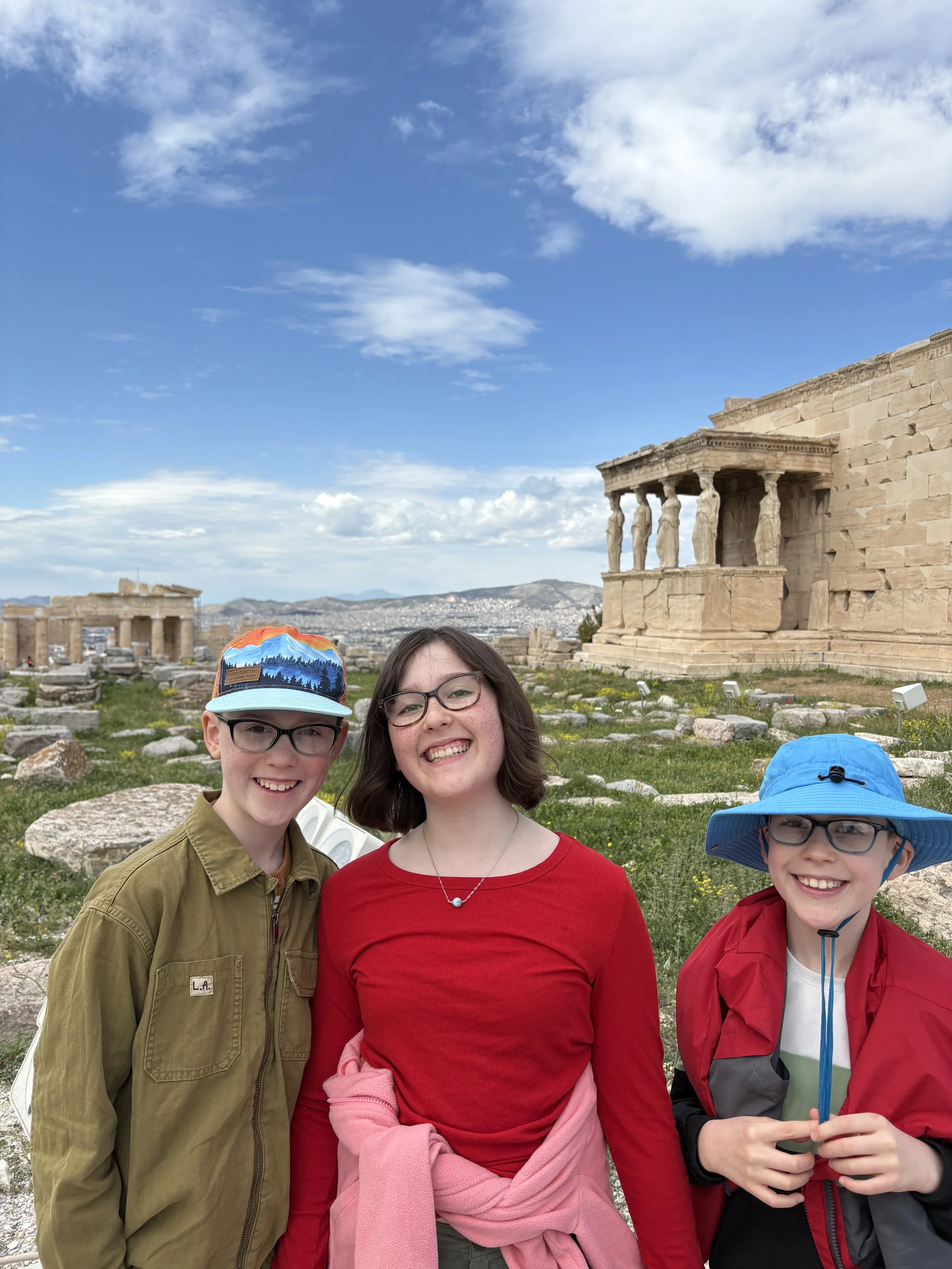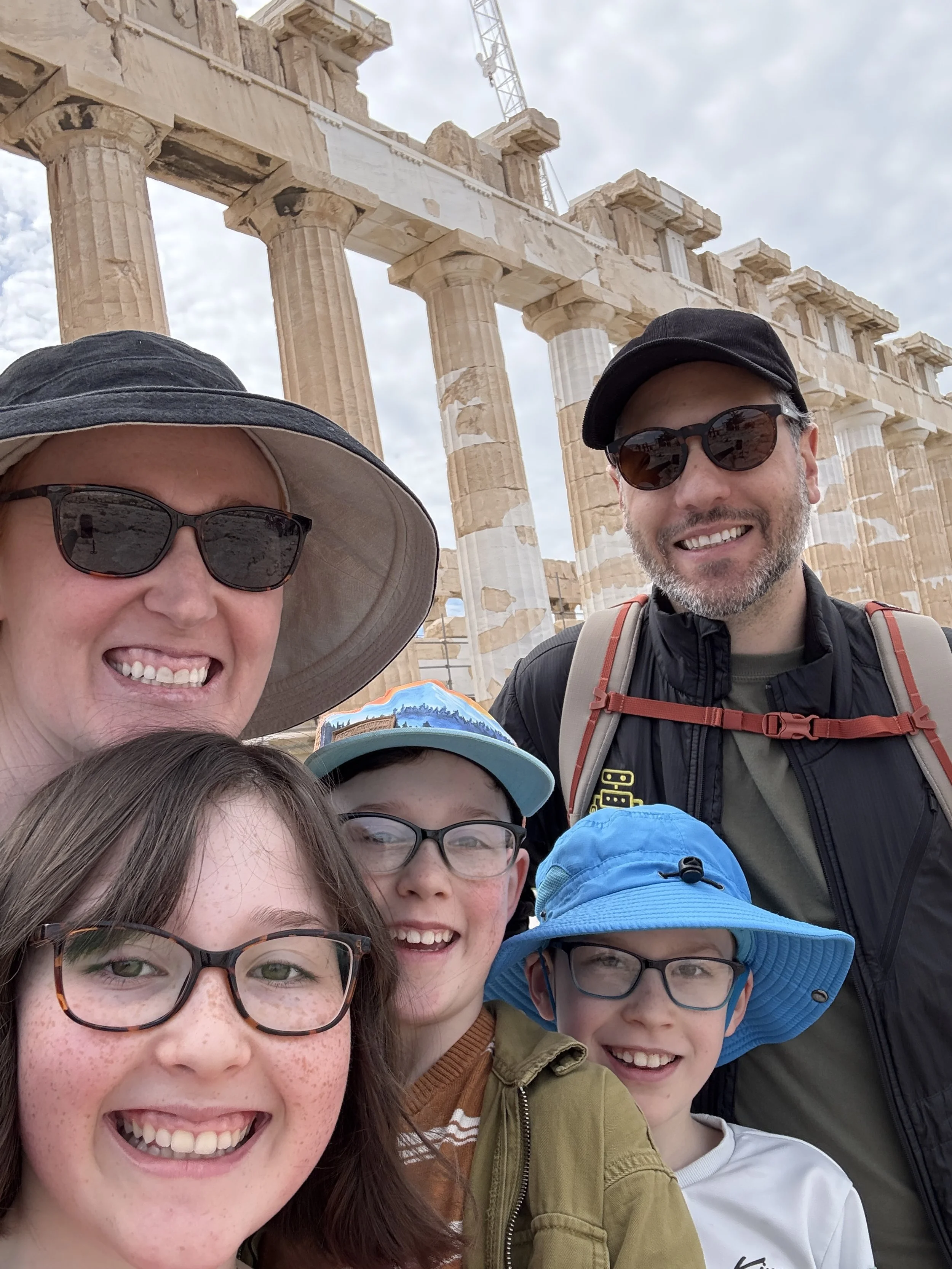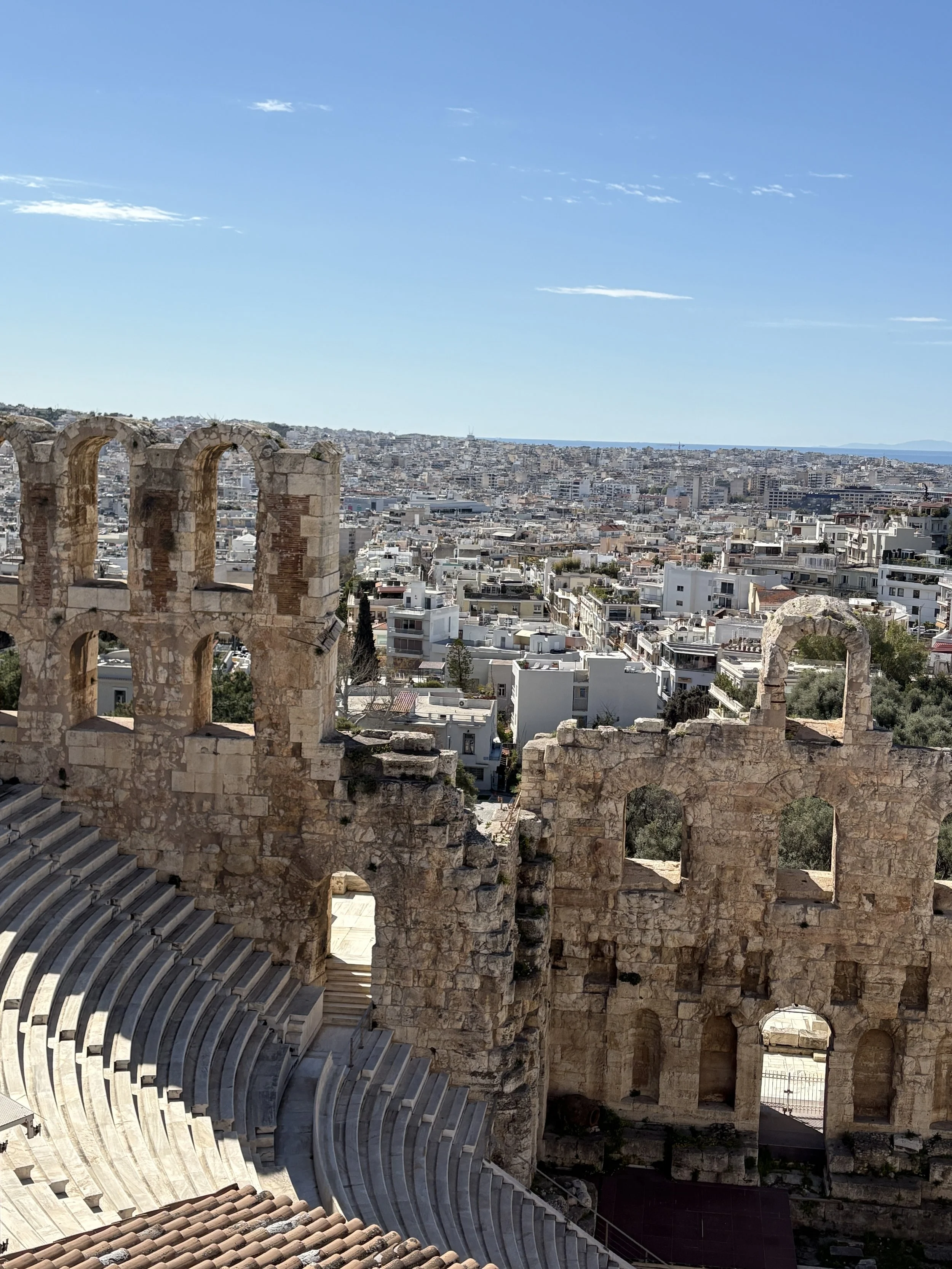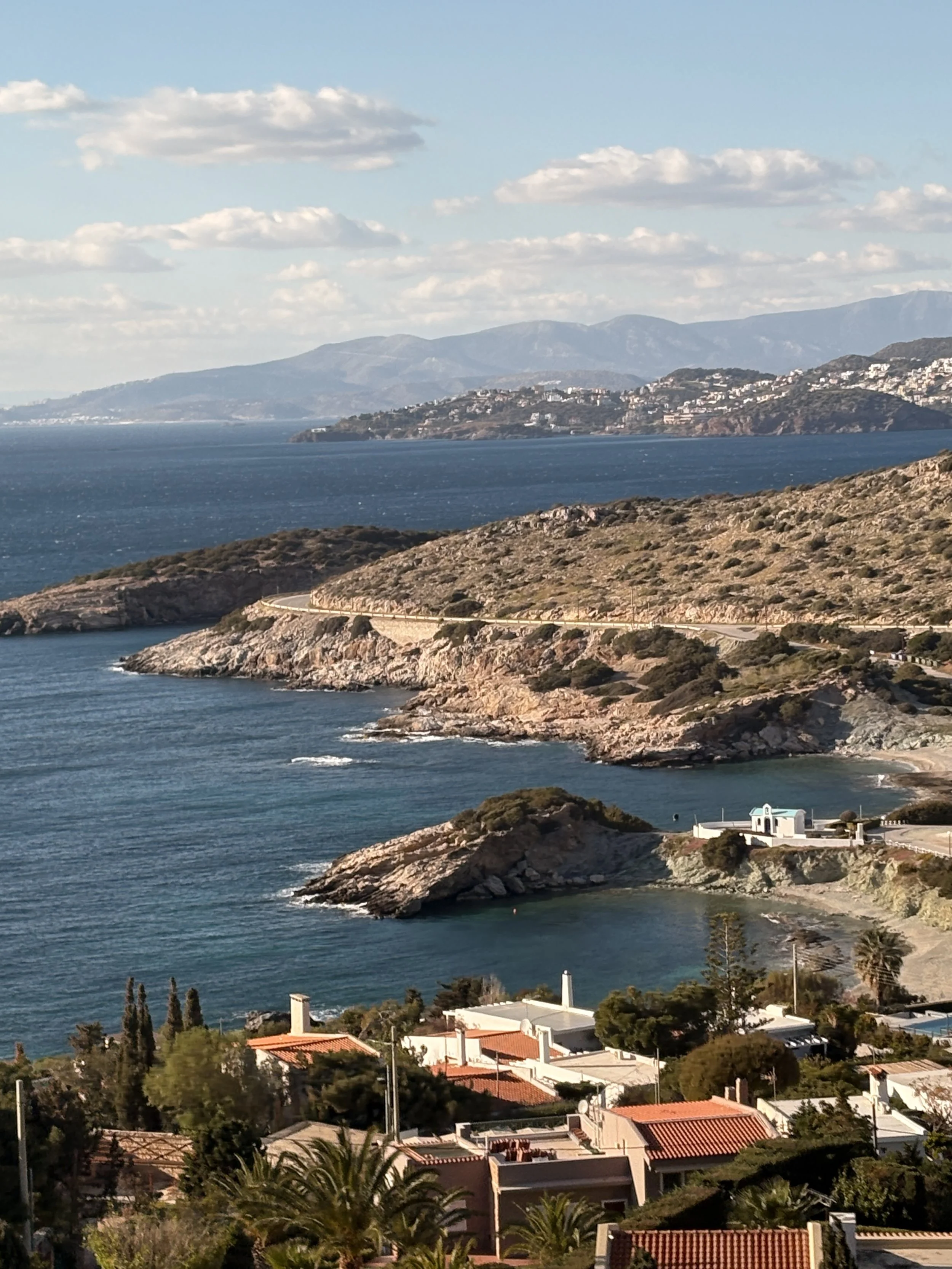Athena’s Olive Tree
Where mythology meets reality
By Evan Strauss
Recently we went to Greece and saw Athena's olive tree, which I have been wanting to see for years since I learned about the myth. But it’s not just a myth. The tree is real, and we saw it.
The myth starts in what is Athens today, with Poseidon, the god of the sea, and Athena, the goddess of wisdom and war strategy, meeting in front of the town. The rules are that the townspeople will judge and decide who will win the city based on the gifts the Gods give.
The competition starts with Poseidon, who immediately springs a fountain of water from the earth. The townspeople are impressed and go to drink it, but then they find (him being the god of the sea) it’s salty. They all spit it out in disgust and move on to Athena, who calmly and quietly sprouts a tree. But it is no ordinary tree; it is the world's first olive tree.
She quickly explains that it can be used for medicine, wood, and food. Then she throws in a little note that they can also pickle the olives in Poseidon’s salty water, which makes Poseidon mad—like, really mad. Poseidon, knowing it’s over, storms off into the ocean in a rage. After that, the townspeople decide to name the city Athens in tribute to Athena. And that is how the olive tree came to be.
When we went to Greece and visited Athena’s olive tree, we learned about the challenges the tree itself has faced through the years.
When the Persian war happened, the tree was burnt down, but from the stump a sapling started to grow. The caretakers of the land nurtured it, and it soon grew back to its old size. The tree went through many years of wars and hardship, but each time it suffered, the people of Greece would save a branch or a clipping to keep the tree alive. But is it still the same tree?
Here is my theory. It cannot be a descendant because it’s not grown from seed or pit; and it can’t be the same because none of the trunk or roots are the same as the first. And it has been slightly moved over the centuries as well. After that research, I have concluded that the tree is not a descendant but rather a clone by regrowth.
But what’s your opinion?
Personal Note:
In the three short days that we were in Greece we got to see quite a bit. We saw Athena’s olive tree, the Acropolis, the Temple of Poseidon, and we drove along the coast of Greece. We also got to taste their incredibly fresh and delicious food, which is the best food we have tasted on this trip (don’t tell the Italians). Seeing Athenas olive tree was a myth come true for me. To my surprise we found pits on the ground and may or may not have taken one (don’t tell the authorities). At the Temple of Poseidon we went up to it and were amazed by how much was left. It was so windy, but we managed to stay up there for the beautiful sunset. I learned a lot and it was really cool to have the opportunity to see a place in person that I knew so much about. We can’t wait to go back!












